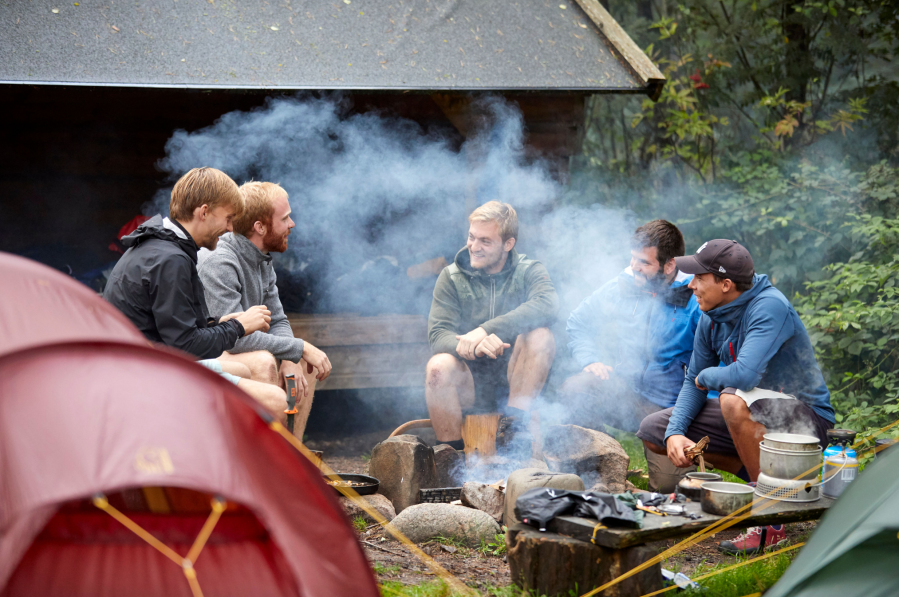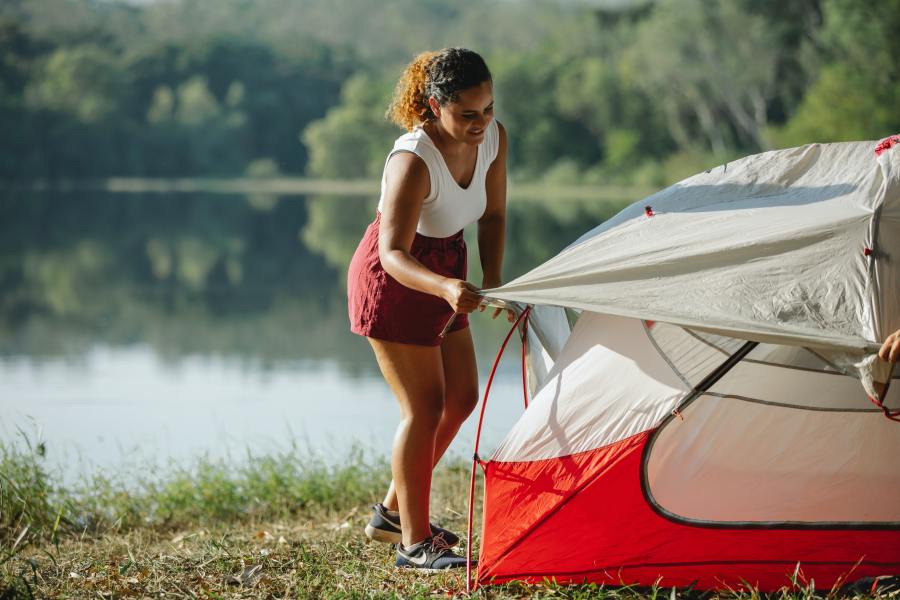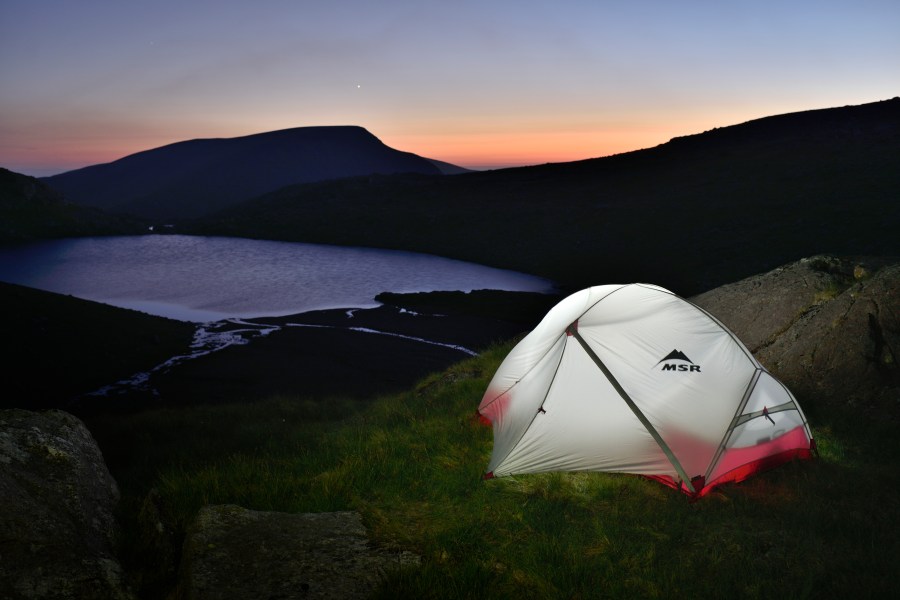For a classic backpacking trip, your tent is one of your most important bits of kit, besides your trusty boots. And yet, its protective function leaves it vulnerable to wear and tear, from funky odours to broken zips, mould, mildew and even rips. Outdoor grime compromises DWR (durable water repellent) coatings and sand, smoke, dirt and even UV rays can contribute to degraded materials. As you certainly don’t want to be caught out in unexpected wet and windy conditions with an unstable or malfunctioning tent, here we break down the process of how to clean a tent so you can sleep easily in the outdoors.
Main image: Ray Wood
Can camping tents be washed?
Yes, they can and indeed, should be washed at least once a season – or more after heavy usage or soiling. But you should never wash or dry your tent in a machine. Machine washing can stretch or tear fabrics and damage components and drying your tent with heat in a dryer can compromise the DWR coatings.
How to clean a tent
You might think cleaning a tent is as simple as bunging it in the washing machine along with your sweaty socks. Unfortunately, the process must be a bit more hands-on than this to avoid damaging the materials. Wait for a clear, warm day and let’s head outside to get cleaning.

Credit: Nordisk
Step 1: Prep
Remove your tent from its stuff sack, unzip the zippers, and give it a shake to remove debris. Turn the tent inside out and shake it again.
Step 2: Spot clean
Using a mild soap, gently spot clean particularly dirty areas with a non-abrasive cloth or sponge.
Step 3: Soak
Fill a bathtub with lukewarm water and add as much Tech Wash or mild, neutral soap as the state of your tent dictates, agitating it until frothy.
Keeping the tent inside out, submerge the tent and knead it underwater so the soap can get into the nooks and crannies. Now, let it soak for 20 minutes or so and repeat the kneading cycle until the tent is clean.
If you’re dealing with a mouldy tent, deep-clean it by soaking it in a commercial enzyme cleaner for the length of time recommended by the manufacturer. Do not soak for any longer as this will begin to compromise your tent’s waterproof coating.
Step 4: Rinse
Remove the tent from the tub and squeeze the water out – do not twist the tent as it could warp the fabric.
Hang up the tent while you empty the tub and refill it with clean water. Now repeat step 3’s submerging and kneading process to rinse and rid the tent of all soapy residue. You may have to repeat this a few times before all the soap is gone.
Step 5: Reapply and dry
While damp, take the opportunity to reapply the DWR coating of your tent. Then, ensure your tent is fully dried out after cleaning.
Some prefer to hang their tent indoors. This is a good option, allowing for much longer drying time, as long as you make sure not to hang it by fabric corners as this can warp the shape.
Others simply pitch the tent in a shady spot outdoors, ideally on a warm day, and leave it to dry for as many hours as the weather allows.
Step 6: Finishing touches
While you’re waiting for your tent to dry, give your tent poles some TLC with a wipe-down.
Once the tent is fully dry, replace broken zips or clean functional zips with a toothbrush to remove any debris and lubricate them if needed. Now is also the time to grab the sewing kit and stitch up any loose seams or patch any rips and tears.

Credit: Uriel Mont
How to store your tent
First and foremost, upon returning home after every camping trip, you should allow your tent to dry fully in a cool environment. It’s a faff but it’s better than the smell of mildew and mould. Once dry, find somewhere to store the tent. Avoid hot or potentially damp locations such as a garage or the boot of your car.
The stuff bag your tent came in may serve as a very handy compression sack for transporting this bulky bit of kit into the hills, but it’s not necessarily the best storage method for your tent. A mesh bag large enough for the tent to be packed away loosely is ideal, but the likes of an ordinary pillowcase will also do.
Learning how to clean a tent should save you from having to repair or even replace your gear further down the road. If your tent is beyond saving, take it apart and dispose of it carefully using a recycling or upcyling service.
Iff you’re on the lookout for a new tent, check out our gear editor Chris Townsend’s review of the best backpacking tents. He has also shared his top tips on waterproof jacket care and repair.
We also have some advice on how to make your gear last longer, produced in collaboration with our friends at Nikwax.








